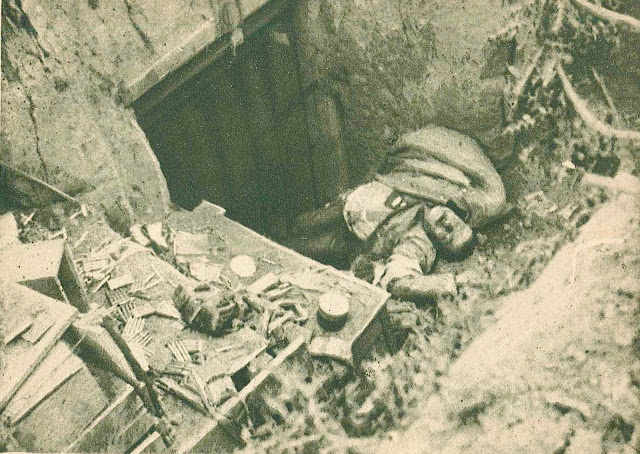A German soldier is killed near a machine gun at the entrance to an air-raid shelter during the Battle of the Somme in World War I. I was involved in the fierce and tragic Battle of the Somme on the Western Front of World War I. In the course of the Battle of the Somme, both armies were firing shells by the ton, machine guns were firing in rapid succession, chemical weapons were being sprayed, flamethrowers were being fired, and tanks were on the scene.
The Battle of the Somme, which took place between July 1 and November 18, 1916, broke out as an Allied offensive against German forces on the Western Front. It was one of the most tragic casualty battles of World War I. It took place about 30 kilometers around the Somme River in France. Prior to the attack, the Allies launched a week-long heavy artillery barrage of some 1.75 million shells to cut through the German defenses of the barbed wire and destroy German positions. On the first day, with the barbed wire intact, thousands of British troops were shot dead in no-man's land by German machine gun and rifle fire. British troops suffered more than 57,000 casualties on the first day of the battle alone, and about 19,000 more soldiers were killed, making it the most disastrous day in British military history. By the time the Battle of the Somme ended about five months after the initial battle, more than three million soldiers had fought on both sides, and about one million more had been killed or wounded.
In the early morning hours of July 15, British troops began shelling different areas, followed by a massive attack. Attacking the Bazentan Ridge north of the Somme, the assault also inflicted losses on the German forces. It advanced about 5.5 kilometers into German territory. However, by the end of July, the Germans had lost about 160,000 men, while the British and French had lost about 200,000 more, and their slight advance was accompanied by heavy casualties.
During the attack at Flerculslet on September 15, the British troops saw the first appearance of tanks on the battlefield, followed by artillery fire. They soon broke down and invaded only 24 kilometers, even with about 29,000 casualties; by October, bad weather prevented another Allied attack, and they became muddy casualties under heavy shelling from German artillery and fighters. The Allies made their final push into battle in mid-November, attacking German positions in the Uncle Sam River Valley. With the advent of true winter weather, the offensive finally came to a halt on November 18. By the time of the ceasefire, the Allies had advanced only 11 kilometers.

